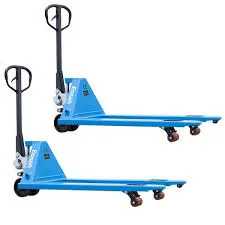


Portable Fall Protection Ensuring Safety in Elevated Work Environments
In various industries, workers frequently operate at heights, whether it’s on rooftops, construction sites, or during maintenance of tall structures. The inherent risks associated with working at elevation make fall protection an absolute necessity. While traditional fall protection systems have been widely used, the demand for portable fall protection solutions has surged in recent years. This article delves into the significance, types, advantages, and considerations of portable fall protection systems.
Importance of Portable Fall Protection
The primary purpose of portable fall protection is to safeguard workers from potential falls, which can lead to severe injuries or even fatalities. According to the Occupational Safety and Health Administration (OSHA), falls are among the leading causes of workplace accidents, accounting for over 30% of fatalities in the construction industry. Ensuring workers have access to effective fall protection not only complies with safety regulations but also promotes a culture of safety within the organization.
Portable fall protection systems offer flexibility and mobility, essential features for work environments that may change frequently. These systems enable workers to perform their tasks safely without the cumbersome nature of fixed installations. As businesses evolve and the nature of work shifts, portable solutions can adapt to various requirements, making them indispensable for modern operations.
Types of Portable Fall Protection Systems
Portable fall protection systems come in various forms, each designed to cater to different applications
1. Temporary Guardrails These mobile guardrails are easily installed and removed. They provide a physical barrier that helps prevent falls while being lightweight and easy to transport.
2. Personal Fall Arrest Systems (PFAS) These systems consist of a harness, lanyard, and anchorage point. Workers can wear the harness, which connects to an anchor, allowing freedom of movement while ensuring their safety.
3. Mobile Fall Arrest Units These units feature a wheeled base that can be moved to different locations as needed. They typically include an anchorage point designed to accommodate multiple users simultaneously.
4. A-Frames and Tripods Designed for specific applications, such as confined spaces or limited access areas, these devices provide a stable platform to anchor fall protection equipment.
Advantages of Portable Fall Protection
The adaptability of portable fall protection systems offers numerous advantages

- Versatility They can be used in a variety of settings, including construction sites, maintenance tasks, and industrial environments, making them suitable for countless applications
.- Ease of Installation Unlike permanent systems, portable fall protection solutions can be set up quickly and easily, reducing downtime and increasing productivity.
- Cost-Effectiveness Investing in portable systems can be more cost-effective than permanent installations, especially for temporary projects or dynamic work environments.
- Improved Worker Morale Providing effective fall protection instills a sense of safety among workers. When employees feel secure, it can lead to increased morale, higher productivity, and reduced turnover rates.
Considerations for Implementing Portable Fall Protection
While the benefits of portable fall protection systems are clear, several factors must be considered for effective implementation
1. Assessment of Risks Conduct a thorough risk assessment of the work environment to understand potential fall hazards and determine the most suitable type of portable protection.
2. Training and Education Providing proper training for workers on how to use portable fall protection systems effectively and safely is crucial. Understanding equipment operation and maintaining safe practices reduces risk significantly.
3. Regular Inspections Portable systems must be inspected regularly to ensure they remain effective and safe for use. Regular maintenance checks can prevent equipment failures that could lead to accidents.
4. Compliance with Regulations Adhere to OSHA and other regulatory requirements concerning fall protection. Non-compliance can result in fines, increased liability, and heightened risks for workers.
Conclusion
Portable fall protection systems are essential tools for ensuring worker safety at heights. Their versatility, ease of use, and adaptability to various work environments make them valuable assets in the fight against workplace falls. As industries continue to recognize the importance of safety, integrating portable fall protection solutions will not only enhance compliance but also foster a culture of safety that prioritizes the well-being of every worker. By taking proactive measures and investing in appropriate fall protection solutions, organizations can significantly mitigate risks and protect their most valuable asset— their workforce.



